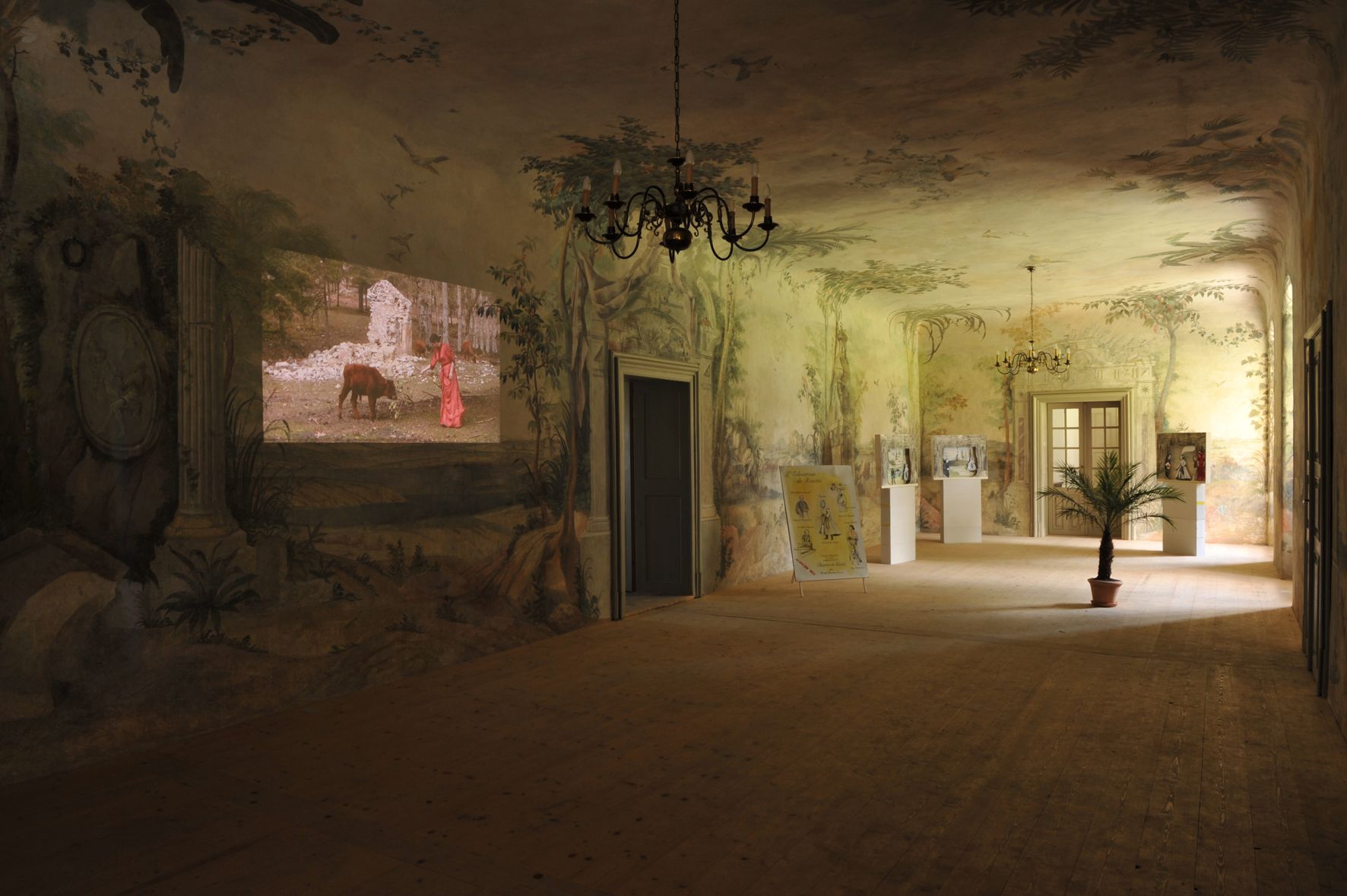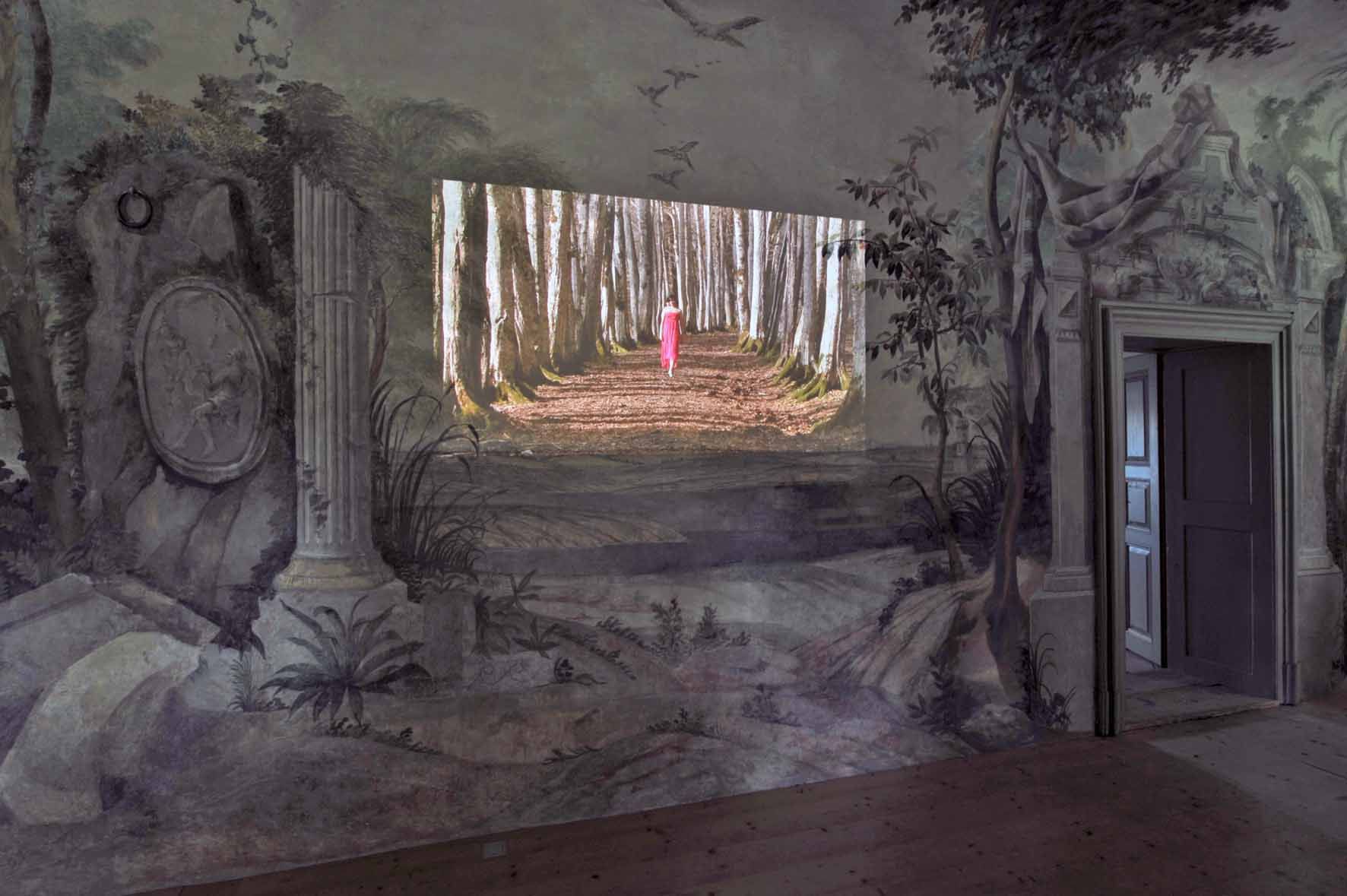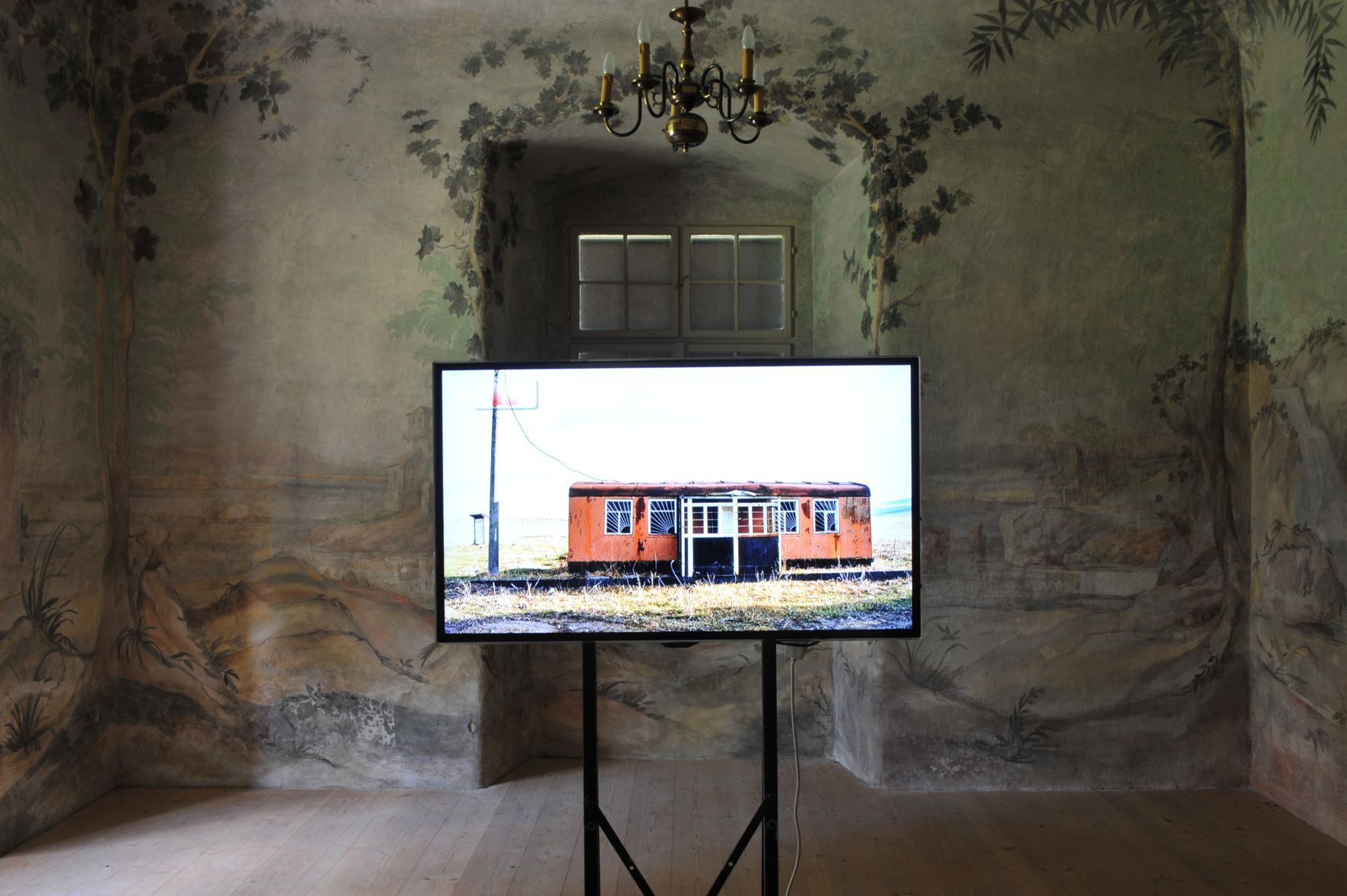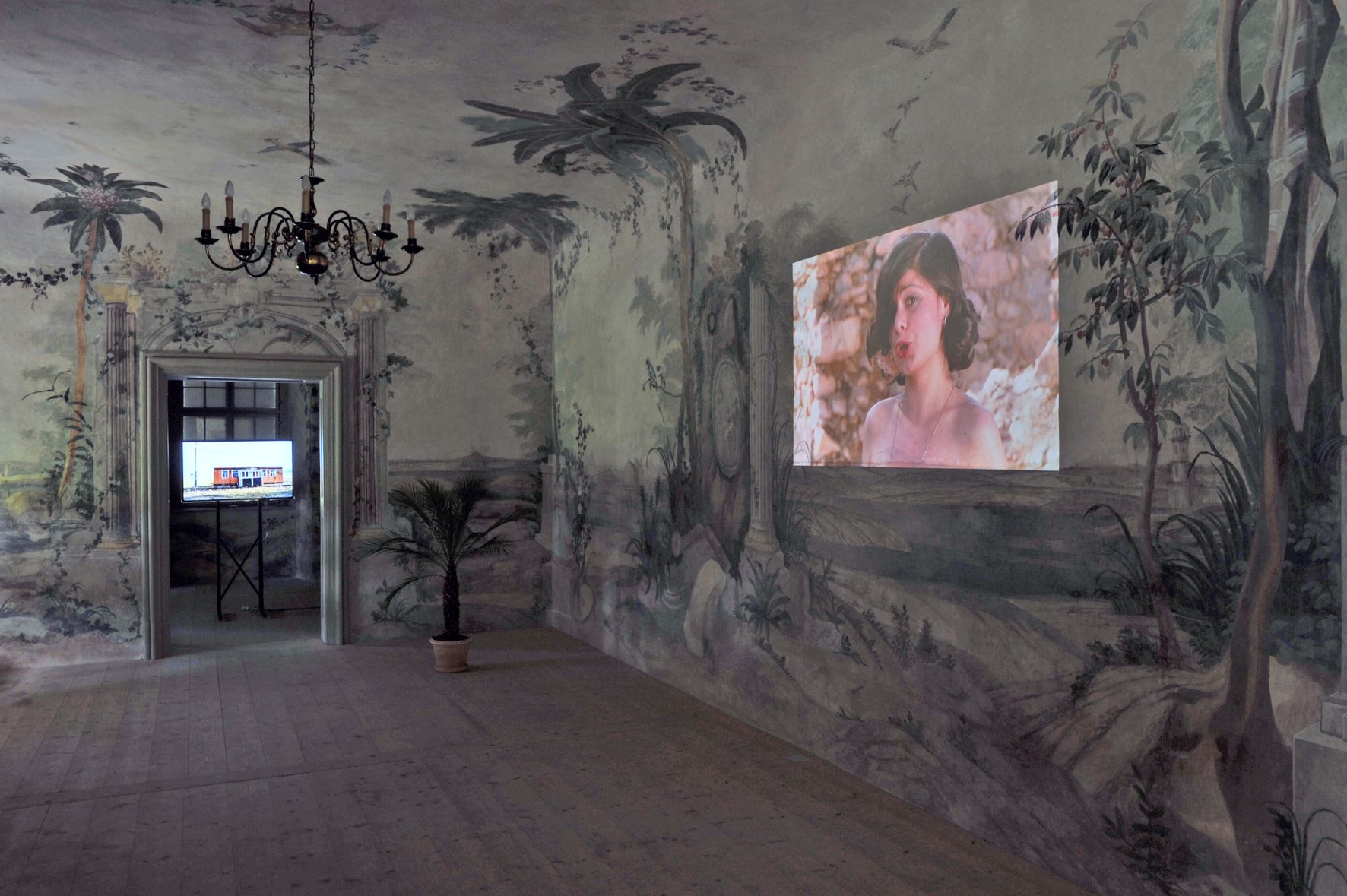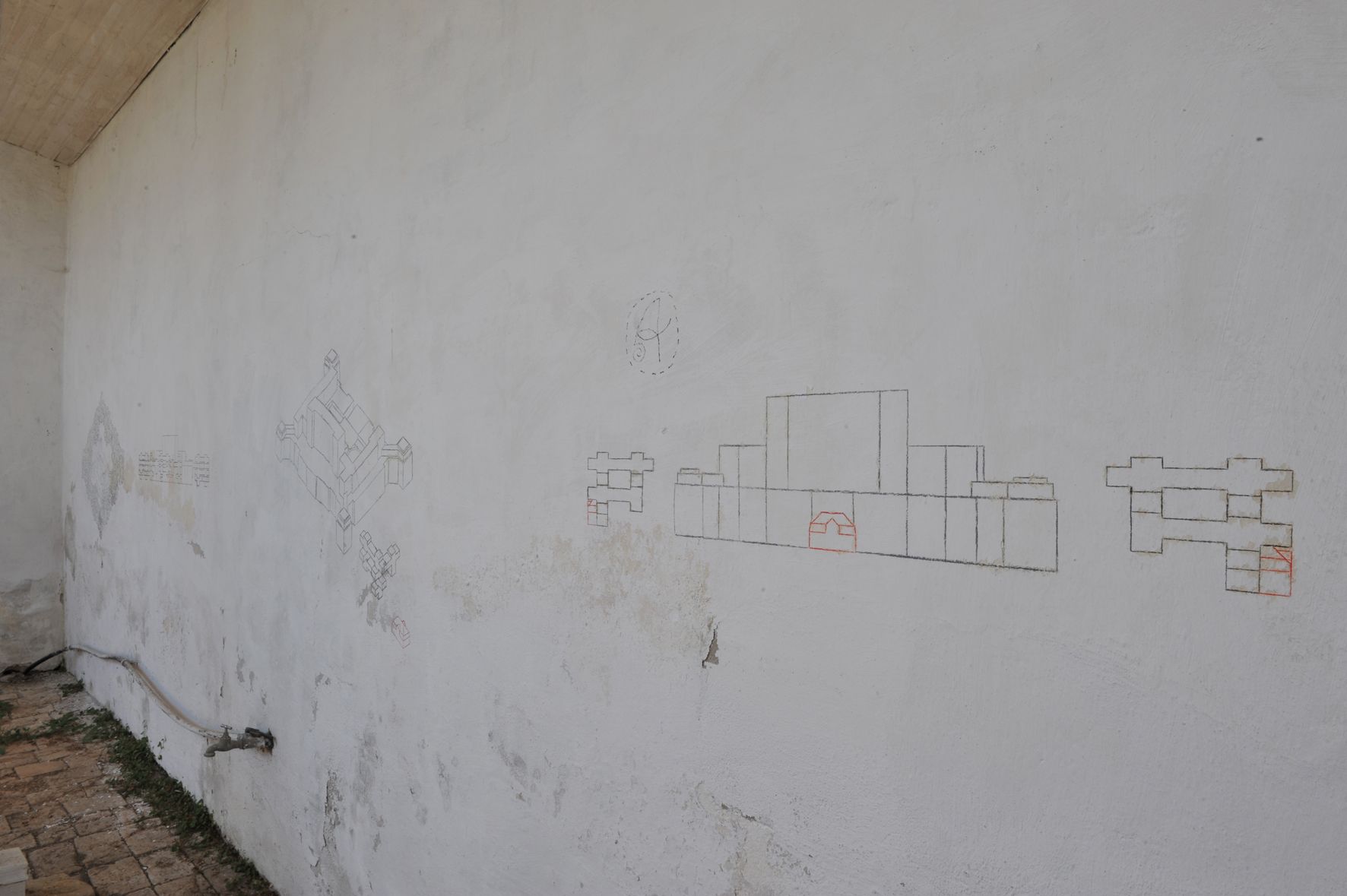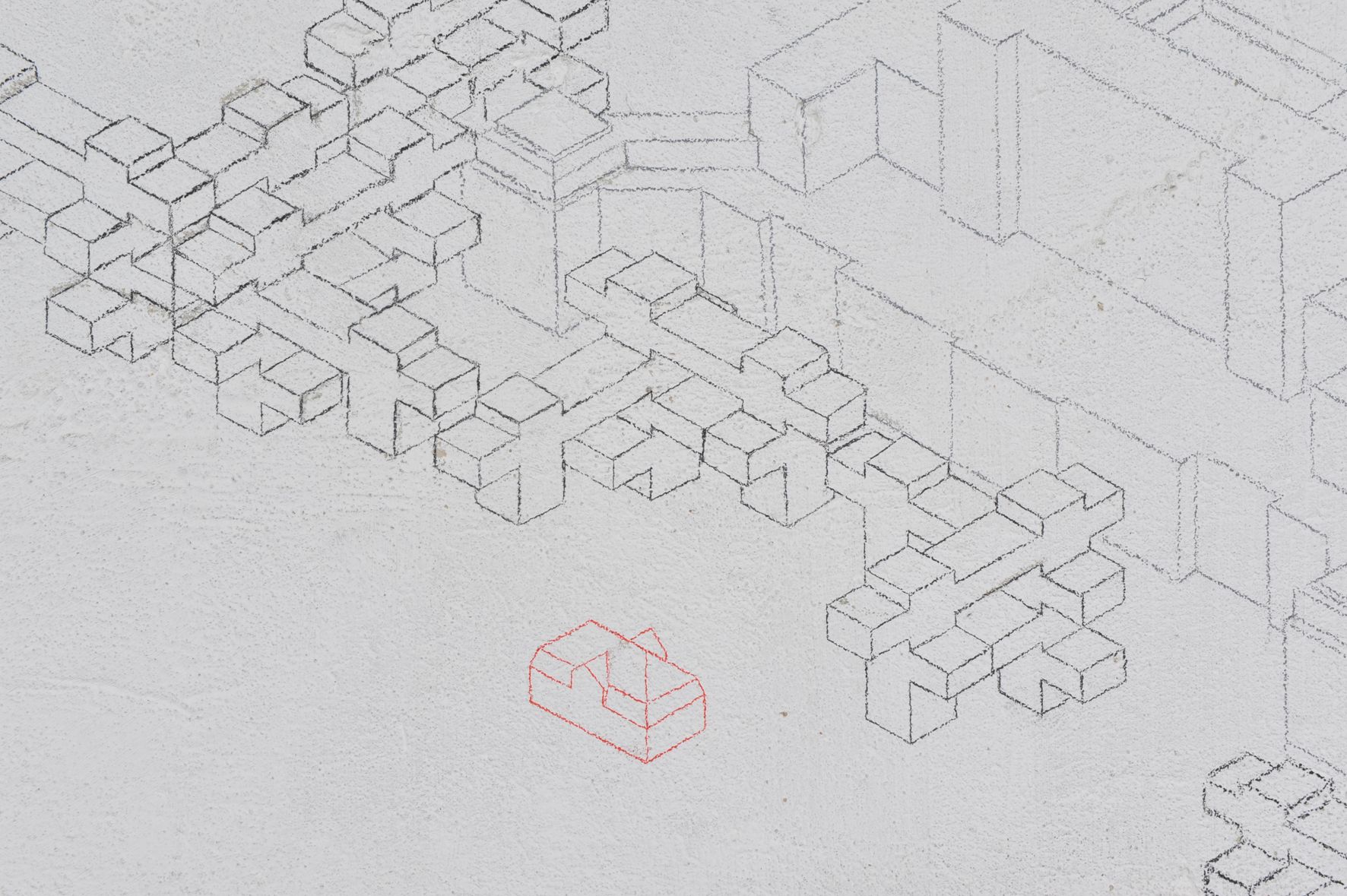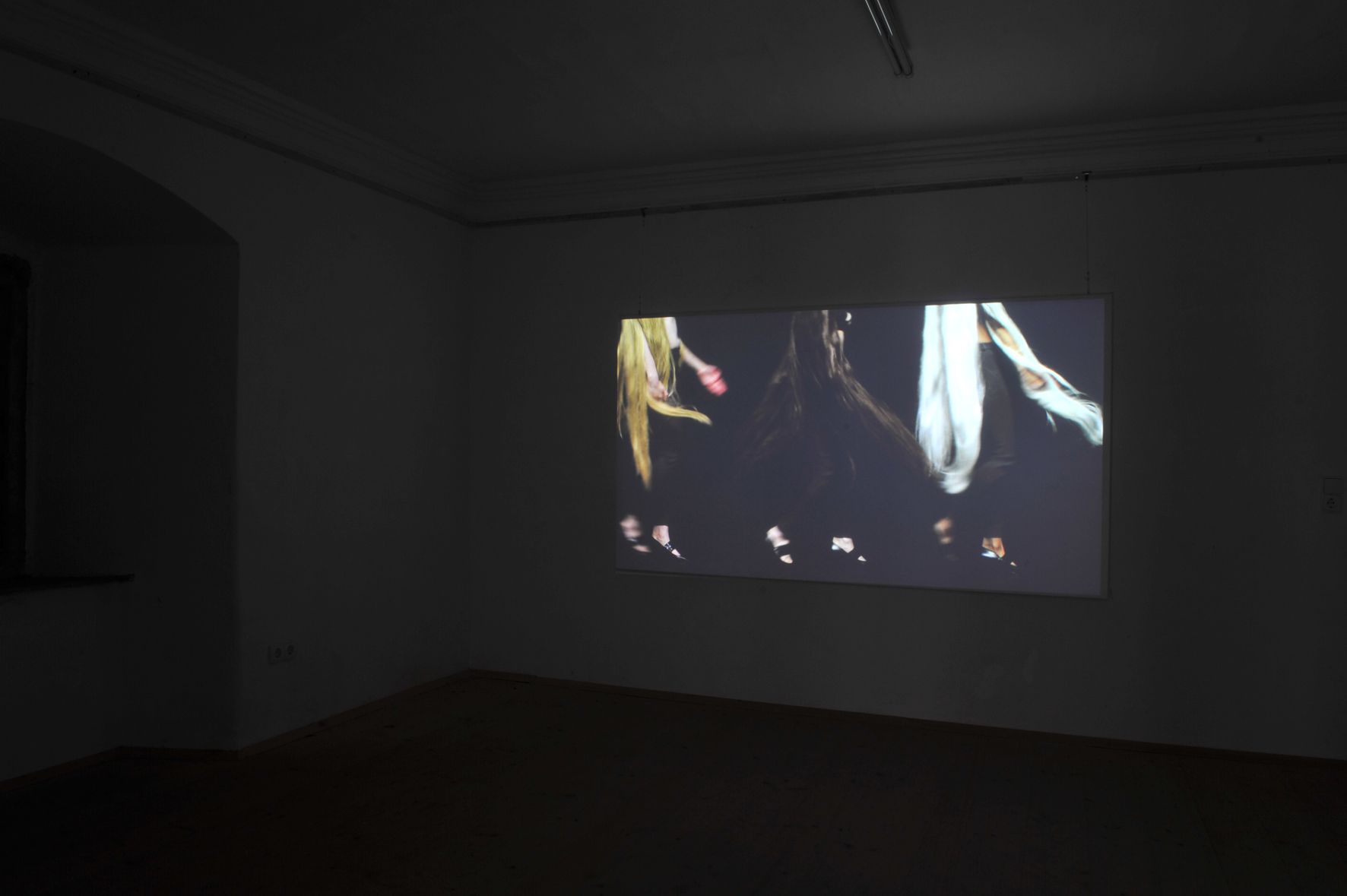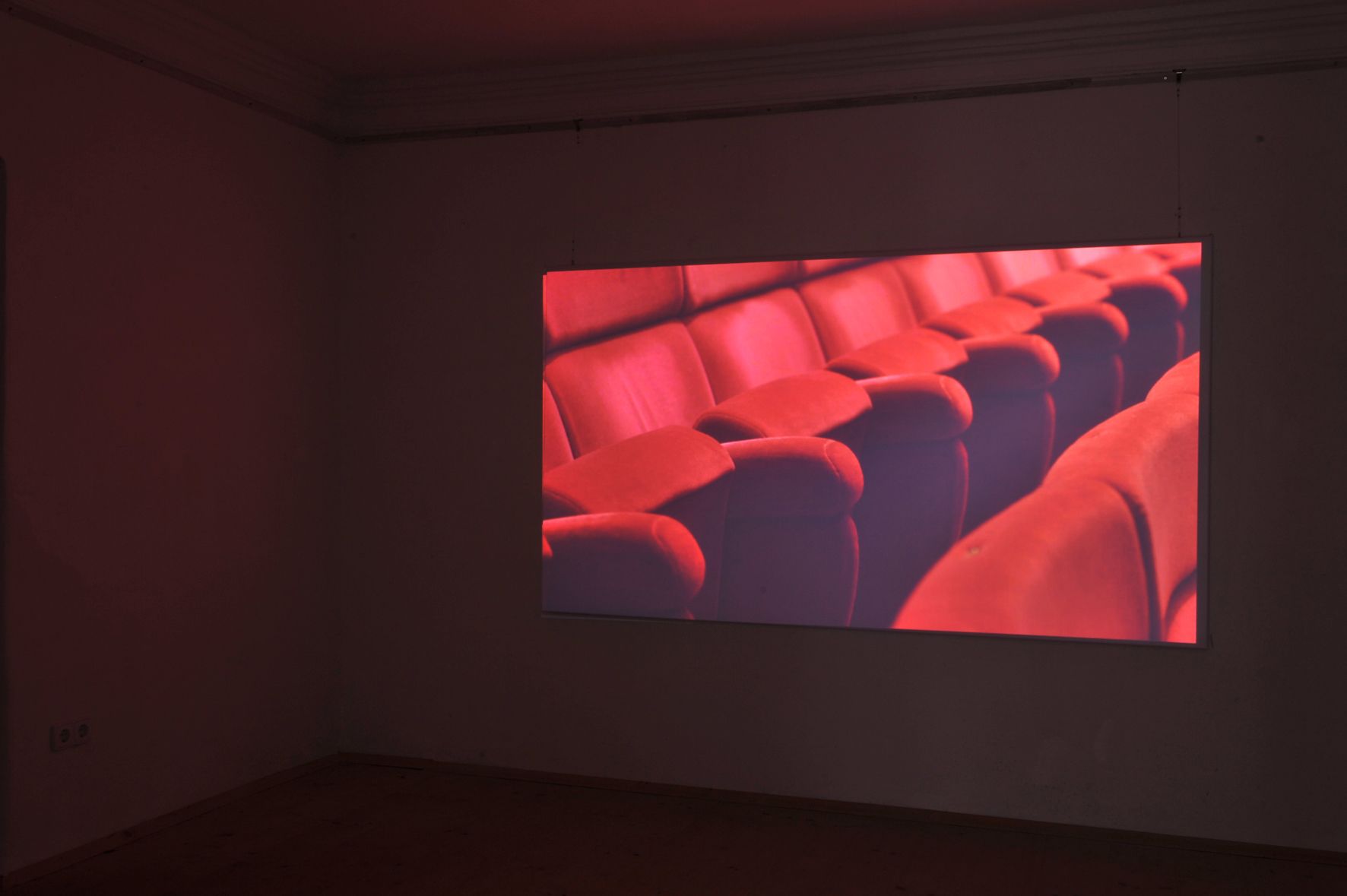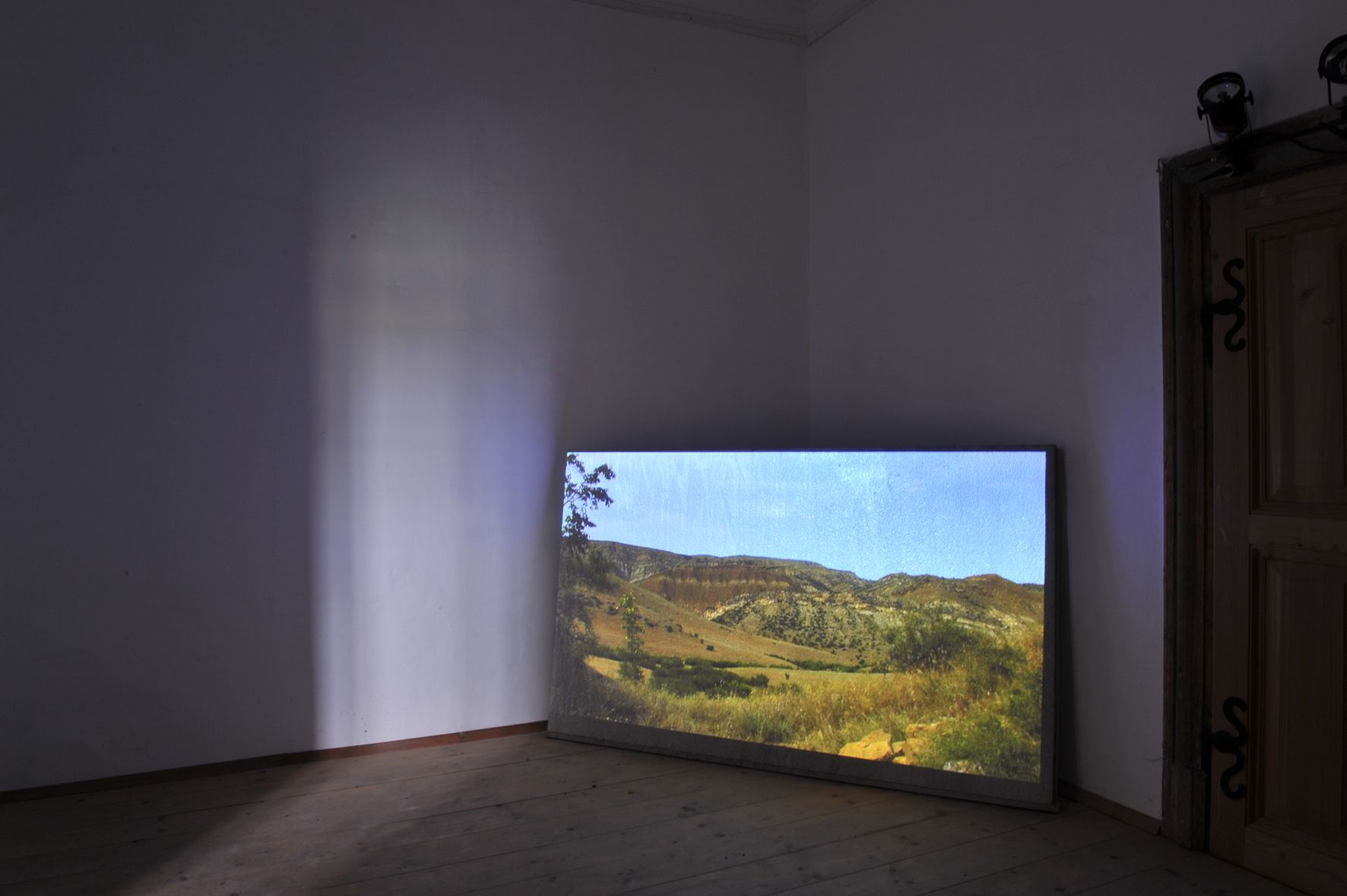L’éducation de Rosette
BackArtists
- With
Information
In the summer of 2012, the Department of Public Art of Lower Austria organized its third exhibition in Harmannsdorf Castle in which contemporary art meets Bertha von Suttner. While the focus in 2009 was suffragettes (Suffragetten) and in 2010 it was governesses (Gouvernanten), this exhibition concentrated on the mysterious, "exotic" world of the Caucasus and ancient Colchis.
On June 12, 1876, Bertha Kinsky married Arthur Gundaccar von Suttner at a secret wedding. Arthur was seven years Bertha’s junior and was the son of the family where she worked as a governess in Vienna and Harmannsdorf. Wanting to live free from society’s constraints and prohibitions – and the wrath of Arthur’s family – the young couple set out on a journey and crossed over the Black Sea to Georgia, where they found friendship and support from the Mingrelian princess, Ekaterine Dadiani. "We were after the Golden Fleece," Bertha wrote in her journal full of optimism. Bertha and Arthur spent nine years in Tbilisi, Gordi, Kutais, and Batumi. They got to know the land and its inhabitants. They earned their living by giving language and piano lessons and working as correspondents for newspapers like the Neue Freie Presse. Bertha wrote serial novels and utilitarian articles for women’s magazines, but she also wrote social studies and a book about their married life called Es Löwos. Arthur worked on a Georgian version of Madame Bovari, among other things. Bertha also tirelessly spread her worldview in all types of publications.
Bertha von Suttner was happy in Georgia. She wrote in her memoirs in 1909: "And altogether we were so inordinately enraptured at being together, our bold stroke had aroused us in such an intense feeling of happiness, everything thus far had gone so sur les roulettes, that we looked forward to a constant increase in our good fortune." Their "honeymoon years" in the Caucasus ended with the death of Princess Ekaterine, after which Bertha and Arthur returned to Harmannsdorf as well-established writers.
(Brigitte Huck)
Contributors
- Kuration
Contributions
Helmut Kandl, Johanna Kandl
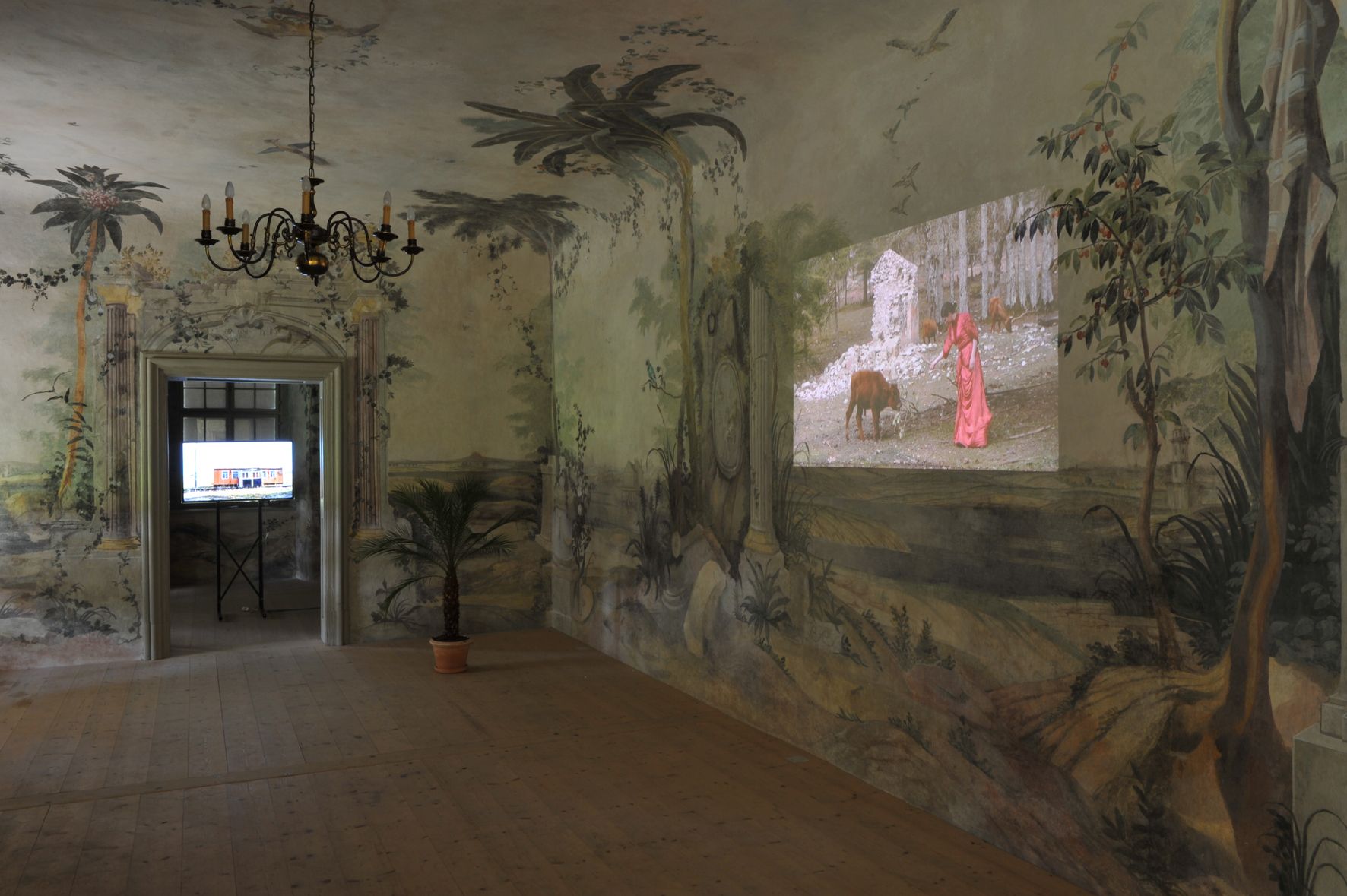
The center of this exhibition is the extensive multi-media work by Helmut & Johanna Kandl, an adventurous and productive artist couple whose art is often rooted in the phenomenon of travelling as a cultural technique. Helmut & Johanna Kandl also see art as a social category worthy of passionate research that can potentially create smart, critical, and humorous tableaus and decidedly actionist formats. The ancient myth of Medea and Jason, who leaves for Colchis (an area on the coast of the Black Sea) on a quest to get the Golden Fleece from a ram there, is one of the corner stones of this work. Others main themes include the Caucasus, which was seen as wild and exotic in the nineteenth century, as well as the friendly contact between the young couple, Bertha and Arthur von Suttner, and the Mingrelian princess Ekaterine Dadiani and her family.
In the spring of 2012, Helmut and Johanna Kandl performed a kind of reenactment and went to Georgia. There, they conducted intense research, tracked down descendants of the Dadiani family, and visited original sites in Tbilisi, Gordi, and Zugdidi. They became friends with historians, authors, photographers, as well as the singer Megi Chilchradze, who played the main role in their film "Wir holen uns das Goldene Vlies!" (We’re After the Golden Fleece!). Bertha von Suttner wrote the one-act play L’éducation de Rosette for the Dadianis’ private theater in their palace in Gordi. Helmut & Johanna Kandl searched for and found the manuscript in the archive of the League of Nations in Geneva. Oliver Hölzl translated it from French to German. The play had originally been performed for a very small audience, with Bertha, Arthur, and members of the princely family playing the roles. Bertha, who had pursued an unsuccessful singing career, wrote several scenes for herself in the play and also sang "C’est l'histoire amoureuse," as well as the so-called "laughing aria" from the opera Manon Lescaut by Daniel-Francois Esprit Auber and "La timbale d’argent" from the operetta by Léon Vasseur.
In this video, the two forgotten arias are brought back to life. Helmut & Johanna Kandl recorded them in the surroundings of the derelict ruins of Gordi Palace, the Dadianis’ old summer residence, thus referring to the ancient area of Colchis, Medea’s home, as well as the motif of the flight of the lovers (Medea & Jason, Manon & Des Grieux, Bertha & Arthur). The artists combine Greek mythology with the story of Bertha von Suttner, comparing and contrasting history with the mundane world of streets, markets, and survival strategies in modern day Tbilisi. "Wir holen uns das Goldene Vlies" (We’re After the Golden Fleece) combines film, sculpture, and painting (tempera on paper) in an installation in the theater of the Schüttkasten (the former granary) in Harmannsdorf. Incorporated in the work is also the famous Baroque illusionary painting by Johann Wenzel Bergl and his associates. To the Kandls, this work represents the spirit of Bertha von Suttner, who was a legendary builder of bridges between different worlds.
Josef Dabernig
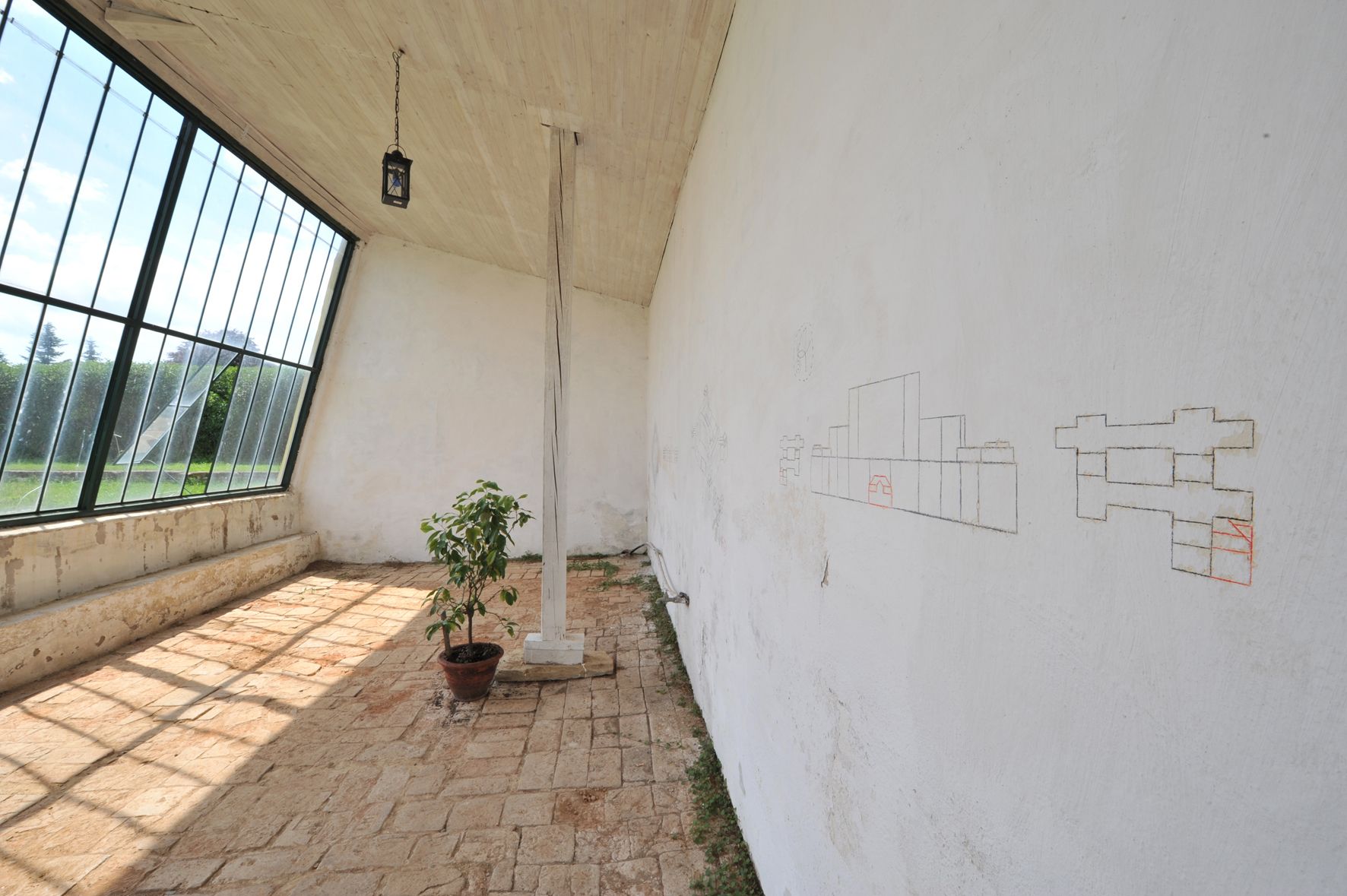
Josef Dabernig is a visual artist and creator of many legendary short films.He made the film Hypercrisis in a recreation home for Russian filmmakers in the city of Dilijan, Armenia, on the Georgian border, in 2010.
He made Frozen Moments during the shooting of this film. For this work, Josef Dabernig worked with CAD files for the architecture of the former Georgian Ministry of Highway Construction. This building is an architectural icon built in 1975 and designed by George Chakhava and Zura Jalaghania. Inspired by Georgia’s breathtaking landscape and fascinated with rural building culture, the architects modelled the building on the idea of horizontal skyscrapers by stacking a total of 18 floors on top of each other "through which the landscape flows." Dabernig juxtaposes this building in Tbilisi, designed according to the Space City method, with the dictator Ceausescu’s megalomaniac palace called the People’s House in Bucharest. As a third element, he chose Plüschow Castle in Germany, which is a small country residence belonging to a count, much like Harmannsdorf Castle for the von Suttner family.
For this work, Dabernig developed sequences of axonometric projections, ground plans, elevations, and cross sections of these three buildings, presenting them as wall drawings in the orangery of Harmannsdorf Castle. The work is thus characterized by different political connotations of space and the presence of the structural. Its narrative frame also refers to Bertha von Suttner’s life, which was located somewhere between a latent political threat, the intimacy of marriage, and the power of modern, independent thinking.
IRWIN

"Was ist Kunst (Tbilisi)" is a work by the Slovenian group of artists known as IRWIN. They originally created this piece for the project One Stop in 2007 for the Art Caucasus Festival. Their co-producer was the TRAM Foundation (Transform Art Module), a group founded by local artists and curators that is still active today, promoting contemporary international art in the Georgian capital of Tbilisi and the surrounding area.
IRWIN was founded in 1983, with Dûsan Mandič, Miran Mohar, Andrej Savski, Roman Uranjek, and Borut Vogelnik, who also later became the ultimate ambassadors of the artists’ collective NSK (Neue slowenische Kunst). The group work as an "organization between ideology and art," employing their radical strategy of appropriating symbols of state ideologies in order to create as well as expand on a complex body of work that they call "retro-avant-garde." With the photographs shown in Harmannsdorf, IRWIN takes their thematic questioning of "what is art?" that they explore in many different artistic media and combines this with a modern state. The result is a surprising approach that surpasses the imagination: real soldiers from the Georgian army, in uniform, turn this question into an artefact by spelling it out on a grassy field, with the city of Tbilisi in the background. In a temporal shift, this work symbolically draws a parallel between the Nobel Peace Prize winner Bertha von Suttner, who lived more than a century ago, with the politically active artists of IRWIN, uniting them in a common cause and reflecting the changing positions in society.
Nino Sekhniashvili

The young Georgian artist Nino Sekhniashvili (born 1979 in Tbilisi) explores historical and contemporary realities in the countries of the former Eastern bloc. Her works especially addresses the fulfillment of promises and the hopes of more freedom in society. The sculpture SCHACH(2011) investigates the field of tension between social norms, local mythologies, and the power of fate. It is a chess board made of rough wood on which the artist, who was a student of Rosemarie Trockel, has overlaid with red printing ink.
The board can be seen as a reference to a phase in the life of the young countess Bertha Kinsky, during which she spent much time in casinos of Venice, Paris, Homburg, and Baden Baden with her widowed mother Sophie, who was a habitual player. During one of these journeys, always taken under the guise of a trip to a health spa, she met the princess Ekaterine Dadiani of Mingrelia for the first time. The princess would later play an important role in Bertha’s life and would help and support the young couple Bertha and Arthur after their romantic escape to the Caucasus. On the board are three sheep bones. Since ancient times, animal ankle bones like these have been rolled to predict the future in the Balkans and other regions. In Georgia, a "red bone" refers to someone who strays from the norm.
Katrina Daschner
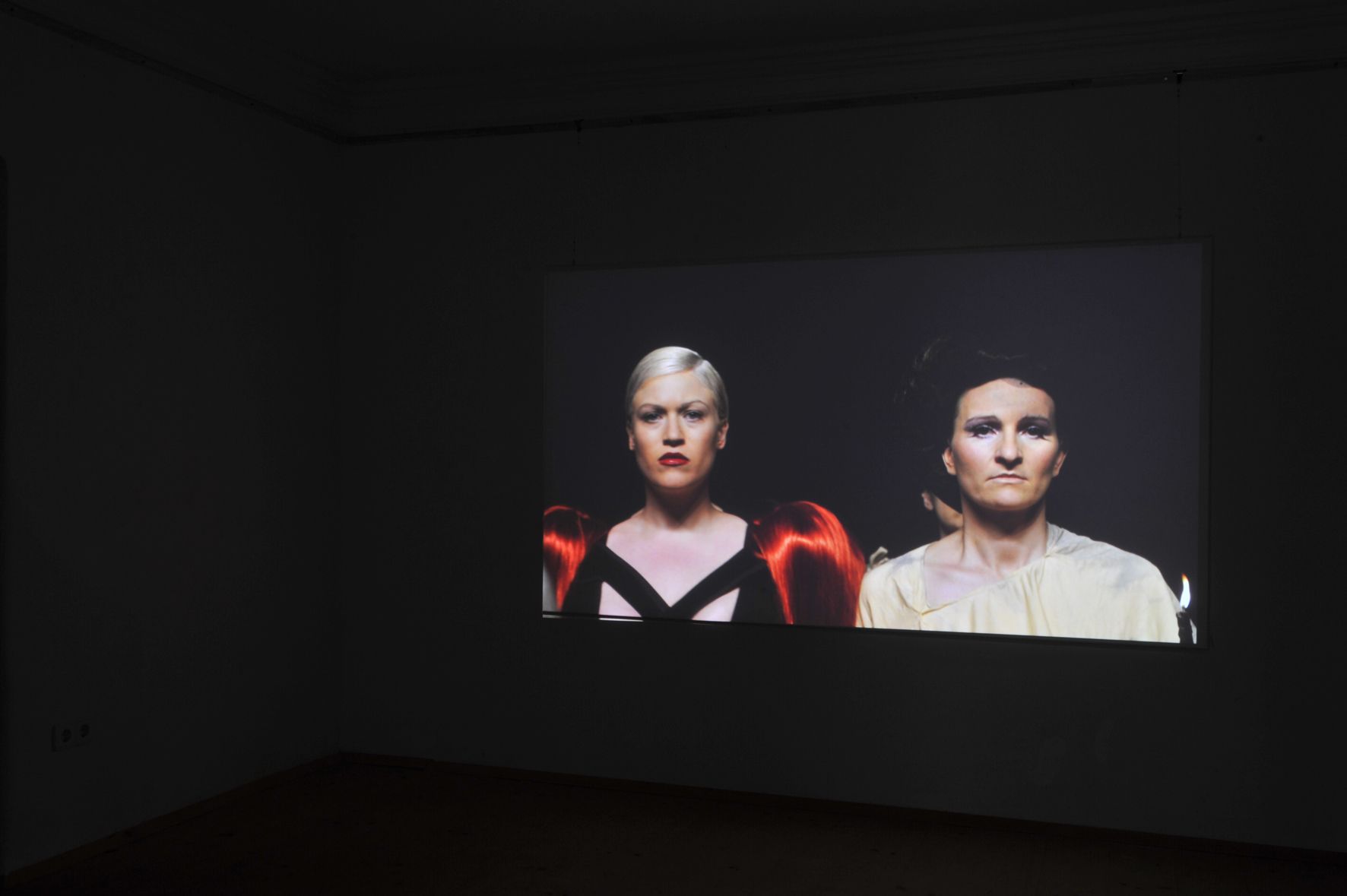
Katrina Daschner (born 1973 in Hamburg) is a filmmaker, performance artist, and Vienna’s most exciting representative of radical queer feminism. Her long-term mission is to change established, misdirected images while also eradicating stereotypes. One such stereotype is that of Bertha von Suttner, as remembered on the 1,000 Schilling bill: as a dominant, strict, withdrawn, and antiquated matron.
In reality, Bertha von Suttner’s story was modern and adventurous. After having been engaged several times and having tried to become a singer, she had an amour fou with Arthur Gundaccar von Suttner. Leaving the social constraints and prohibitions of Vienna behind, she fled with him to the "wild" Caucasus and its wonderful promise of freedom. Katrina Daschner has interpreted this exotic and excessive side of the Nobel Prize laureate as a flamboyant travesty. Daschner created a burlesque film called Bertha, for which she found a glamorous location: Carlo Mollino’s Teatro Regio in Torino, a setting that is a symphony of red velvet, Plexiglas, and female curves. A choir of women wearing Bertha von Suttner outfits function as narrative protagonists located somewhere between Bertold Brecht, performance, modern dance, and political satire. This bold film celebrates self-confident women who are very determined, cheerful, and high spirited.
Markus Schinwald

Already before the Venice Biennale in 2011, Markus Schinwald was ranked among the artists of his generation who received much international recognition. He works with photography, film, installation, painting, sculpture, and performance to express his fascination with bodies, space, and movement. His highly complex arrangements function like spaces of action that are located in a field of tension between aesthetics and emotions.
Hidi and Meryl, the two young women with unruly hairstyles seen here, portray the precarious situation of independent and intellectual women at the end of the nineteenth century. It was a time of new beginnings, changes in social structures due to industrialization, and new forms of earning a living. A case in point: Because she was unmarried, Bertha Kinsky was a financial burden on her mother Sophie, and she thus took on the position of a governess in a family whose son she would later marry. For many years now, Schinwald has been continuously expanding this series of works based on changing, improving, and adjusting personal portraits from the nineteenth century. He is fascinated by the fashion of the time – the concealing and draping – and the body as a construct of cultural history. Schinwald upsets these paranoid and melancholic portraits of prim young ladies by letting them undergo a surreal shift that results in new identities.
Sonja Leimer

Sonia Leimer investigates concrete physical space and its relationship to artistic practice. She works with many different types of media, exploring the relationship between personal narratives, today’s society, and the established canon of images. In her video Western, Leimer went to the breathtaking Georgian landscape in the area around Kaspi. Walter Ulbricht and the DEFA (East German film production firm) filmed Indians riding into the sunset here. Intended to replace capitalist films imported from the West, these East German movies were made in the "Wild East" of the Georgian prairie. Leimer lets the camera pan over barren mountain ranges and dry grass until it rests on a string sextet. The women, who are all members of the Tbilisi Symphony Orchestra, are playing the film music composed by Elmer Bernstein from The Magnificent Seven (1960) directed by John Sturges. Looking at the autonomous area of South Ossetia, which is a part of Georgia according to international law and is on the foot of the grand Caucasus, Leimer explores questions of territory, identity, and state structures.
Also part of the work are black silkscreen prints on glass that are hanging on the wall. These offer a kind of peepshow of motifs from Western dime novels. Through this pictures, Leimer zooms in on classic male stereotypes, like the sheriff and the cowboy, as well as female figures who’ve earned the men’s respect, who resisted the social norms of the time, and who became legends as a result of their lifestyle and attitude, like Bertha von Suttner.
Stefan Frankenberger
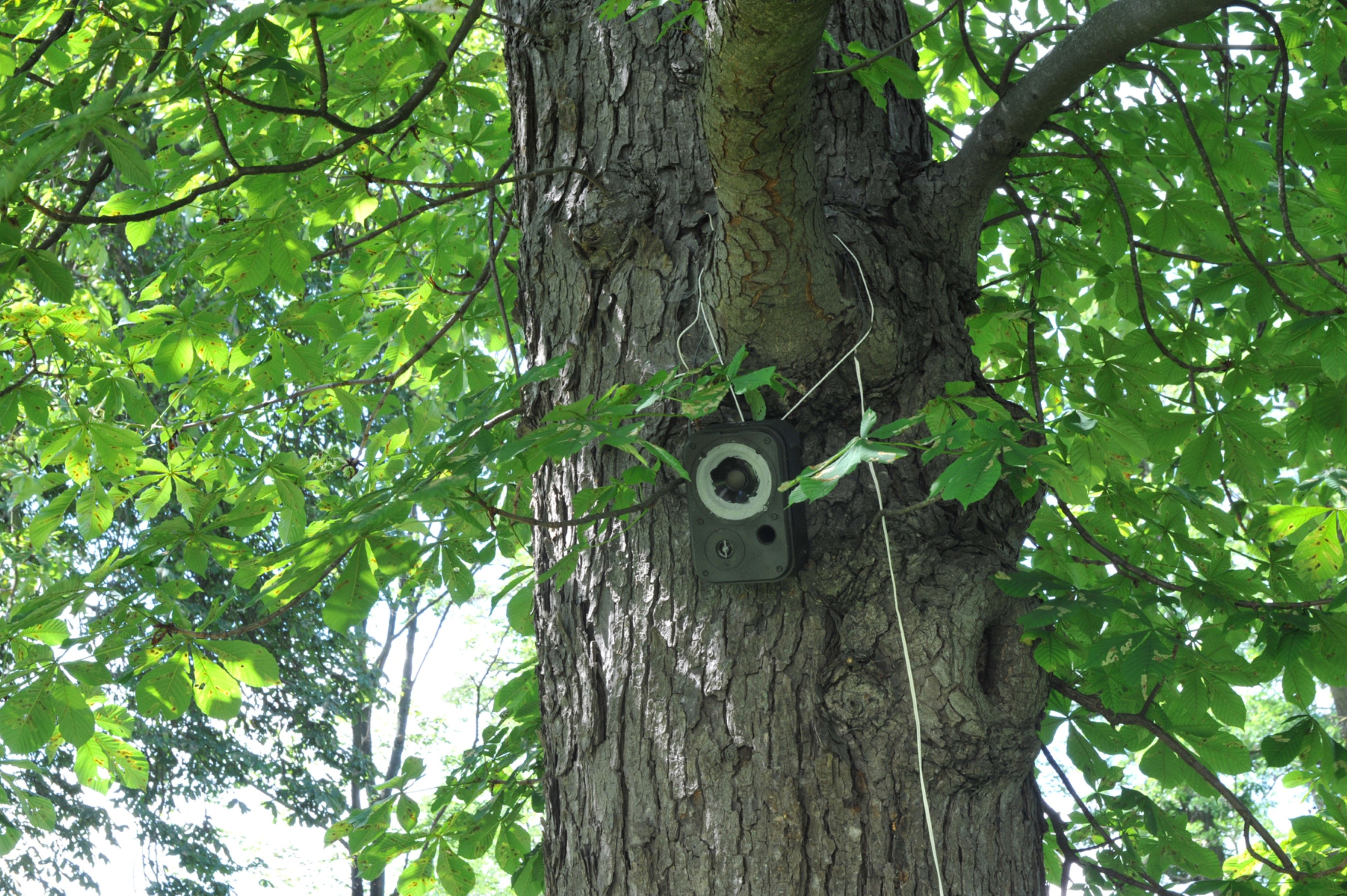
Stefan Frankenberger has long been associated with the group Amber and Gold and its musical offshoot coco, an experimental band in which Frankenberger collaborates with Philipp Hofstätter. In coco, they wear costumes made of aluminum foil and play on typewriters and exhaust pipes, work with the drone of old radios and coffee grinders. Their legendary debut in the Künstlerhauspassage in 2004 was followed by a 24-hour music performance in a transparent igloo, a soundscape called "Techno Saga 1973", and the cultural critical farce "Still Leben" (Still Life).
For this exhibition in Harmannsdorf, Stefan Frankenberger presented a solo project with the title "der unbekannte Soldat" (the unknown soldier). For this project, he asked young men performing their basic military service as well as professional soldiers, officers, and personnel of the Austrian army to read aloud written passages by Bertha von Suttner. Many of the passages were selected from von Suttner’s novel "Die Waffen nieder!" (Lay Down Your Arms!), her memoirs, and her Nobel Prize acceptance speech. The readings were successful, and although Frankenberger wanted to provoke a little, there were no confrontations. Thirty people read for all together three hours. For the exhibition, visitors can view the entire performance in a loop outside the building. The combination of sunshine and pacifism conveys the comforting assurance that, more than one hundred years after von Suttner’s plea, no one – at least in this country – is interested in fighting a war anymore.
Images (16)
